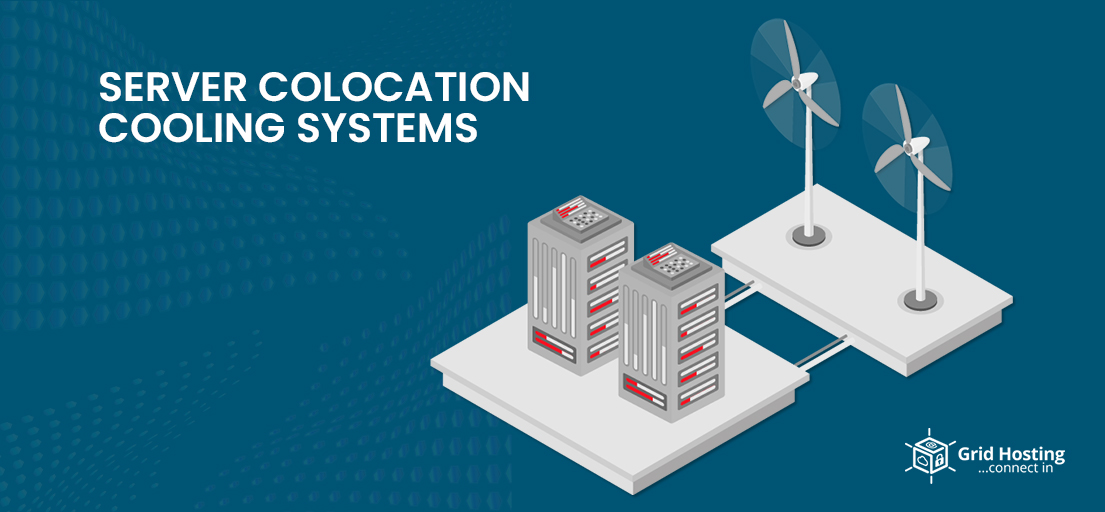How Do We Design Data Centers For Server Colocation UK With Cooling Aspects in Mind?
Server colocation UK is the most trendy hosting subject for numerous reasons. It protects you from theft and accidents and saves you from the headaches of managing an in-house server.
However, ideal server colocation in the UK is also expensive for numerous reasons. Data centres face a lot of challenges to provide reliable colocation services. You do not realize the difficulty level unless you start the endeavour. The racks of servers passing and storing the information all the time are not easy to build and maintain.
Cooling is one of the most challenging tasks. The simple fan is not sufficient to eliminate the tremendous amount of heat that these network devices generate.
This article is the crux of our knowledge base and techniques about data centre cooling as a company at Grid Hosting.
Data centre planning requires critical thinking in multiple aspects. You have to keep cooling, budgeting, efficiency, power and capacity in mind. Not incorporating them in your plans would keep your data centre at stake.
This is how we design our data centre for good server colocation. We keep the following things in mind.
Build technical capacity
You don’t have to purchase all of the hardware your designs require. But, at least the method you develop should be optimized enough to allow expansion without creating troubles. For example, when you upgrade, the layout becomes problematic, too cluttered, or even claustrophobic.
Account for thermal needs
We all have an idea of how much heat the storage facilities generate. There has to be solid planning. Also, you need the resources to dissipate. The consequences of improper and faulty calculations can be devastating. Components overheat quickly, and sensitive electronic equipment is ruined.
We hire experts to design proper layouts. The structure that professionals recommend is the one with hot-and-cold aisle layouts and liquid cooling systems. The engineers with decades of experience know that the methods must incorporate the best possible airflow. It is impossible to move heat away from network equipment otherwise.
We Use the Most Energy-Efficient Power Consumption Method for Server Colocation UK
There are significant power requirements of machine operations and cooling techniques. For example, statistics show that the contribution of data centres in the United States energy consumption is two per cent.
So what would a thriving data centre like Grid Hosting do to help this? First, they will build a power and cooling design that efficiently uses cooling techniques and power distribution. The natural output of such a working process is less energy consumption and a lower carbon footprint.
You Might Also Like To Read : Factors That Influence Your UK Colocation Pricing & How to Control Them
The Concepts That Involve Regulating Airflow
Data centre maintenance is not possible without controlling thermal output. So how do large data centres manage? They use modern airflow techniques as well as cooling techniques related to evaporation.
Overheating translates to higher cooling expenses. Furthermore, the probability of data loss and hardware failure also increases. That can even lead to fires.
So why do we need airflow? Yes, it is to move the generated heat away from hot hardware. So, airflow is essential for cooling.
Use Raised Floor Tiles
Installing elevated floor tiles in cold aisles can boost airflow and help with overall cooling if you have a hot and cold aisle arrangement in place. However, raised flooring may not always provide the same benefits in heated aisles.
Implement Data Center HVAC
Warm and cold air mustn’t mix as they pass through the system. Unfortunately, the cooling properties of air-based systems do not allow that. That calls for developing one of the these two things:
- Hot Aisle Containment System (HACS)
- Cold Aisle Containment System (CACS)
Aisle manages to retain their temperature difference with the help of either barriers or curtains that prohibit intermixing. That leads to increased efficiency of the overall system. But remember that if you shield both hot and cold isles, it will not offer any extra advantage over protecting only one. However, the isolation of both isles is essential.
How To Power A Data Center
Without proper equipment selection and monitoring, you cannot empower a data centre. Here are some things that are the requirement of the venture. At Grid Hosting, we strictly follow the same industry standards and practices.
Uninterruptible power supply: Energy enters the centre and is transferred to an uninterruptible power source (UPS). It uses a rectifier to regulate the energy. Another of its unique functions is to store backup energy in batteries for emergency cases.
Power distribution unit: The energy goes from the UPS to the power distribution unit (PDU), converting the current to a usable voltage. That is equally good for power monitoring.
Power Panel: The energy then travels to the power panel, which contains a breaker that divides the electricity into circuits.
PDU whip: Power from the PDU is supplied at the whip via an outline. Users can now use the energy by plugging in a cord.
Energy to the racks: Energy must reach the racks where we store the load. Who makes it possible? Actually, the power wires carry this responsibility of transferring energy from the PDU whip to the racks.
Why Gaming Servers Are Expensive
It should be no surprise that a data centre requires a lot of power due to the quantity of cooling and hardware operation. In recent years, data centres worldwide have consumed more energy than the UK. That is why gaming servers are expensive.
Minecraft Servers
The energy efficiency paradox confronts data centre planners. Some clients avoid investing in energy-saving technology upfront due to expenses, but by doing so, they end up paying more in the long run. Aside from the apparent difference in energy and cooling costs, inefficient equipment can cause systems to fail more frequently, resulting in higher future expenses.
These are the challenges that make Minecraft servers expensive. If you are looking for a comparatively cheaper yet the powerful one, Grid Hosting provides the best Minecraft servers that offers an ultimate lag-free and smooth experience.







